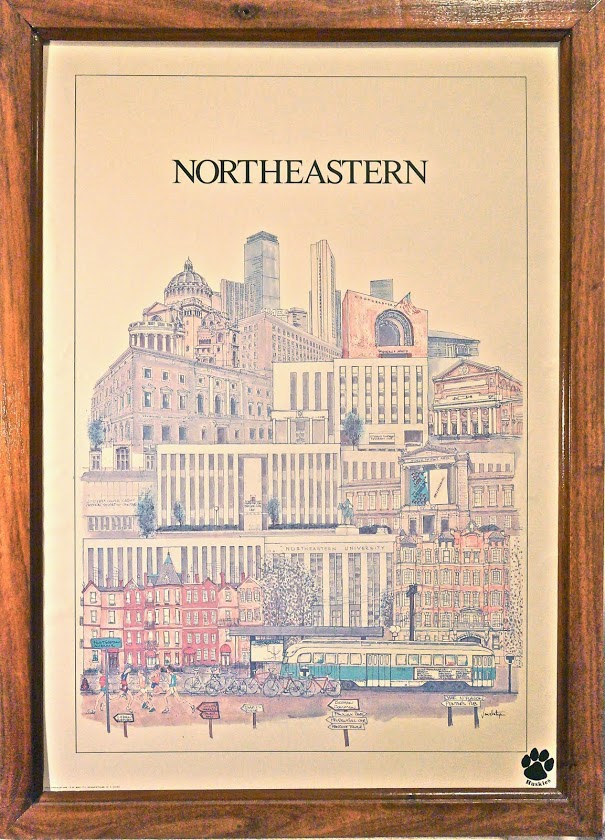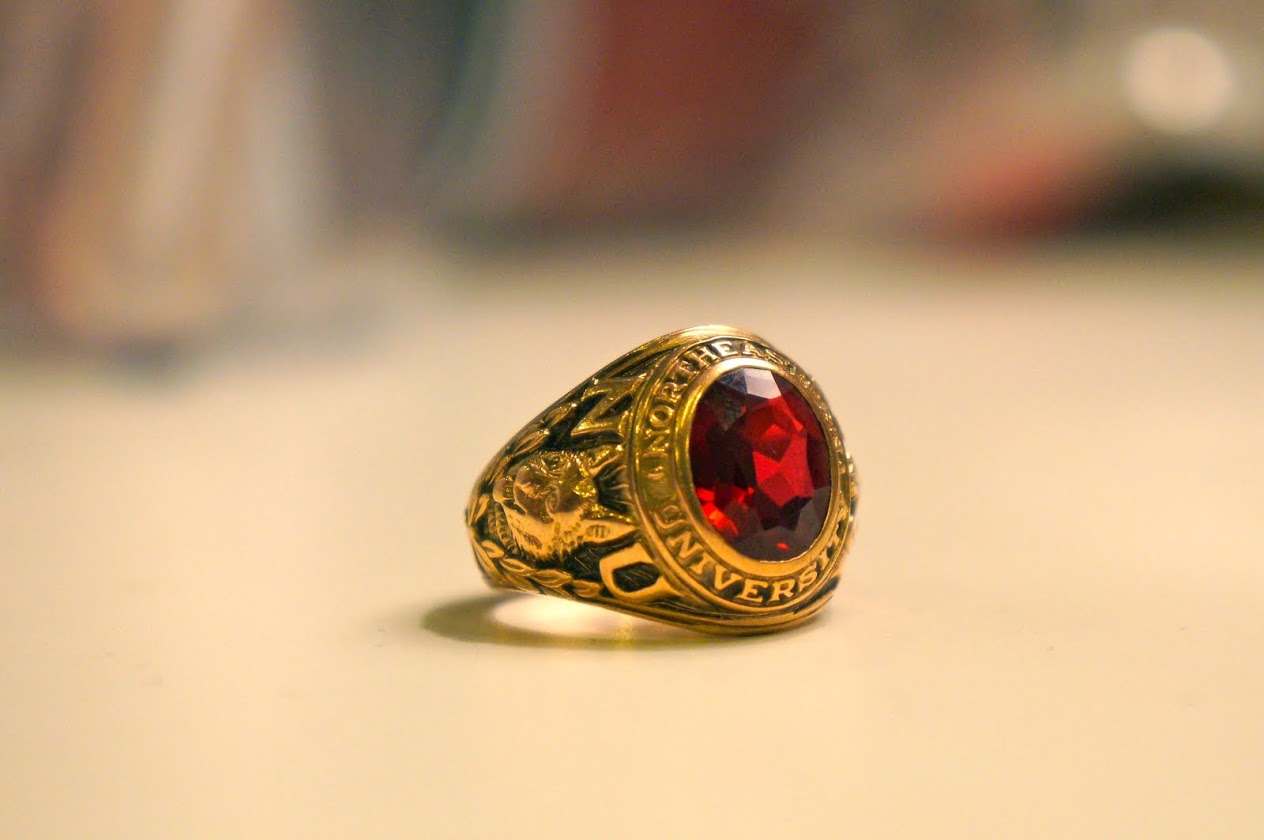Photos by Alli Anastas
When Northeastern broke the top 50 in the 2013 “U.S. News and World Report” college rankings, NUwave practically shut down under the stress of so much self-congratulatory sharing. But what’s changed at Northeastern that brought about this climb in the rankings?
“Take a look at some pictures,” said professor Solomon Jekel, a 33 -year veteran of Northeastern’s math department. When he started, he said, “there were no green common areas, and the classrooms and residence halls were ugly brick buildings.” Of course, there are still plenty of old brick buildings and they’re certainly still ugly, but the upscale new living, learning and recreational spaces balance them out, allowing those ugly brick buildings to give the university the character and sense of history one expects of a 115-year-old institution.
A quick tour of campus is enough to demonstrate the physical transformation. In the 14 years since 2000, Northeastern has opened 12 new buildings and renovated 33 existing ones; two more are under construction. These new buildings look nice in alumni magazines and recruitment materials, but they’re not truly successful additions unless they enrich the student experience. Senior Grace Gartel, a future medical school student, explained that, “the same services have been here” for her whole academic career, but they were “just less easy to use.” When she started, neither the student center nor the library had been renovated. Today, she spends most of her time in afterHours or Snell, attesting to the usefulness of these renovations.
More important than the campus, however, is the quality of student that Northeastern attracts today. When Professor Jekel joined the faculty in 1980 after completing doctoral and postdoctoral research at Dartmouth and MIT, “most Northeastern students were commuters,” he said. But today “the student community is much tighter.”
And more competitive For the past few years, the admissions office has had its pick of more than 40,000 applicants. “The school can select a higher quality student [now]. I don’t know if I would get in today,” said Craig Sands, a communications major from the class of ‘87. Ryan Howes, a 2000 graduate and the leader of the New Hampshire alumni chapter, agreed. “When we all get together, the running joke is that with our grades and SATs, we’d never get in today,” Howes said of his fellow alumni.
In Sands’ era, he said, typical Huskies were “average or above average students…who knew they didn’t have the fortitude or interest to stay in school for four [straight] years.” For these students, Sands explained, work and entrepreneurial opportunities were more important than the academic experience. Today, the focus has shifted towards integrated learning because, according to Senior Vice Provost Susan Ambrose, most faculty members believe that the strongest students are those “students who want to inquire across disciplines.”
As the student body grew more competitive, concerns arose that some faculty members were not teaching at the level that the new generation of students demanded. The administration answered that worry by bringing back an old faculty development program, and by leveraging its talented student pool to bring in some of the best educators around. “Really good faculty members want to engage better students,” Ambrose said, speaking to the synergistic effect between faculty and students.
 Howes noted the change in the quality of faculty members, too. “Today, when I turn on the TV, I see Northeastern professors doing spot pieces for news organizations,” he said. “We never saw any of that years and years ago.”
Howes noted the change in the quality of faculty members, too. “Today, when I turn on the TV, I see Northeastern professors doing spot pieces for news organizations,” he said. “We never saw any of that years and years ago.”
Ambrose is at least partially to thank for that improvement. After 25 years at Carnegie Mellon University, she joined the administration last year and immediately began to affect change. “The most important thing I [have been] able to do…was [create] the Center for Advancing Teaching and Learning Through Research,” she said, noting that a large problem in higher education is the emphasis placed on faculty research over teaching. To support faculty members in the transition to teaching, Northeastern re-established an education program for faculty in July.
The increased focus on the science of learning doesn’t end with establishing faculty development. Ambrose is also bringing her experience in the learning sciences to the undergraduate population, with a major project underway to revamp the co-op preparation course curriculum. “In the past, for some students, it took until the third co-op to understand how to go back and forth” between full-time work and class, Ambrose said. Since the co-op program is meant to enhance learning, not just set students up with jobs after graduation, Ambrose said she is looking to “intellectualize the co-op prep course” and help students understand the different kind of learning that goes on while they’re on co-op.
And though jobs aren’t the only benefit of the co-op program, they certainly are among them. “What I have that a lot of other people won’t is the resume,” said senior Gartel. Ultimately, the enhanced resume of a typical two- or three co-op-Northeastern student sets him or her apart in the job search after school, and the university has staked its reputation on minting graduates who are already well versed in the professional world—a reputation it backs up with a 90 percent success rate for placement into the workforce or graduate school after graduation.
Despite Northeastern’s formidable growth, opportunities and climb in rankings, the fact remains that it is still not a top choice for many students. According to the “U.S. News and World Report,” Northeastern offered about 14,000 students admissions last year, and only about 2,800 accepted that offer. “I applied to all the top schools: Harvard, Yale, Brown, Columbia and Princeton, for example,” Gartel said, “and I was planning on transferring out [of Northeastern]. But I felt like I belonged here already and I didn’t feel like starting over.”
There are many hurdles left to clear before stories like Gartel’s vanish, and many feel that the undergraduate experience will fall short in some respects because of the professional focus of a Northeastern education. Still, math professor Jekel likely speaks for most faculty and students when he said he is pleased with the school’s progress. “I’m really happy with the way the university has moved in the last few years,” he said.
_____________________
Liam Synan is a freshman math major from the great state of New Hampshire. In his sophomore year of high school he wandered into the school newspaper meeting, started eating their free donuts and then realized he was in the wrong place. Too embarrassed to leave, he picked up a column and promptly decided writing was almost as much fun as calculus. Before you wonder what he’s doing on a magazine staff, remember that he’s a nerd and thinks of calculus as the most fun you can have with your clothes on. When he’s not being sassy in student publications, you can find him hunkered down with his math textbooks in the library. On the rare occasion he escapes, he keeps running until he finds himself biking, skiing or camping.
